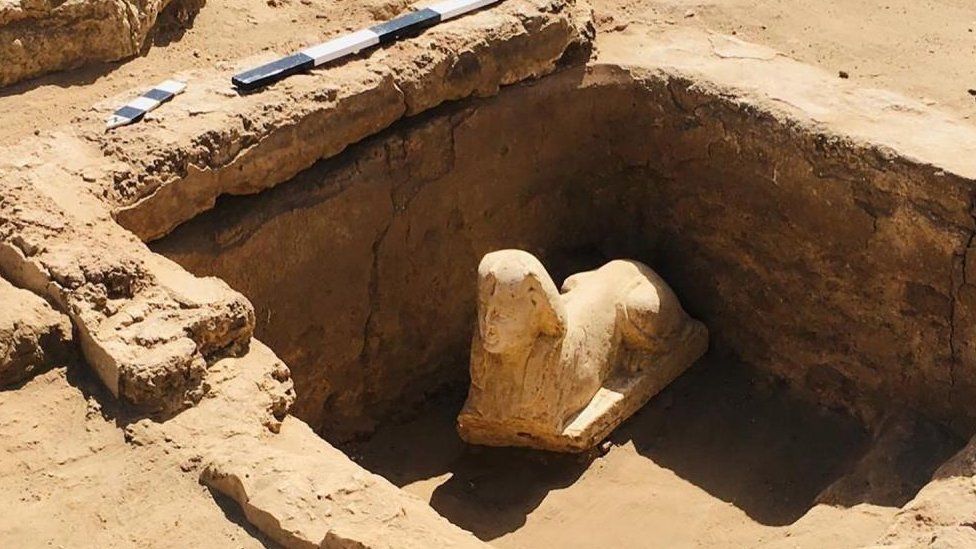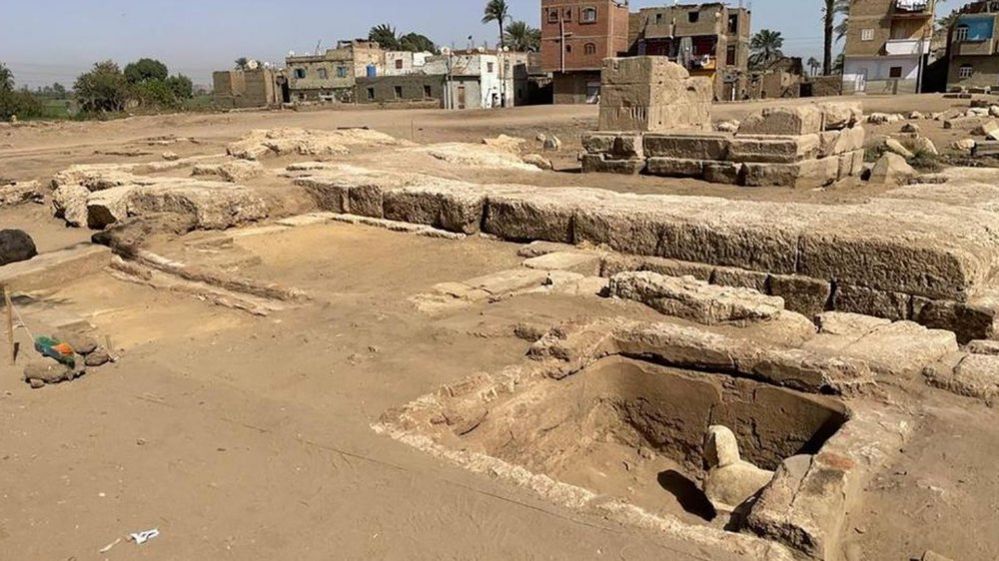Archaeologists have unearthed a sphinx-like statue and the remains of a shrine in an ancient temple in southern Egypt, the antiquities ministry says.
The artefacts were found near the Hathor Temple, one of Egypt’s best-preserved ancient sites.
The limestone sphinx with its “smiley face and two dimples” is thought to represent Roman Emperor Claudius.
It is much smaller than the famous Sphinx in the Pyramids of Giza, which is 20m (66ft) high.
The artefacts were found inside a two-level tomb in the temple of Dendera in Qena Province, 450km (280 miles) south of the capital of Cairo.

Emperor Claudius, whom archaeologists believe the statue’s smiling features may belong to, extended Roman rule into North Africa between 41 and 54 AD.
Archaeologists will study the markings on the stone slab, which could reveal more information on the statue’s identity, the ministry said.

Beside the “beautifully and accurately carved” sphinx, archaeologists also found a Roman-era stone slab with demotic and hieroglyphic inscriptions.
The limestone shrine includes a two-layer platform and a mud-brick basin from the Byzantine era.
Some experts see these discoveries by the Egyptian government as a way of attracting more tourists, to revive its tourism industry amid a severe economic crisis in Egypt.
BBC




